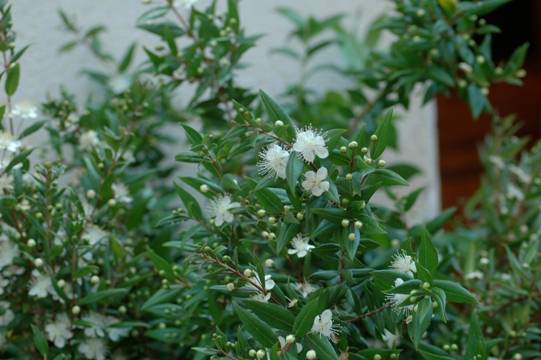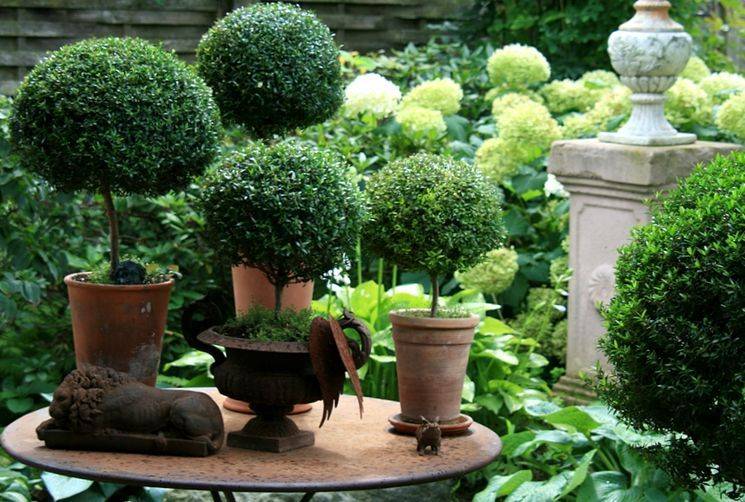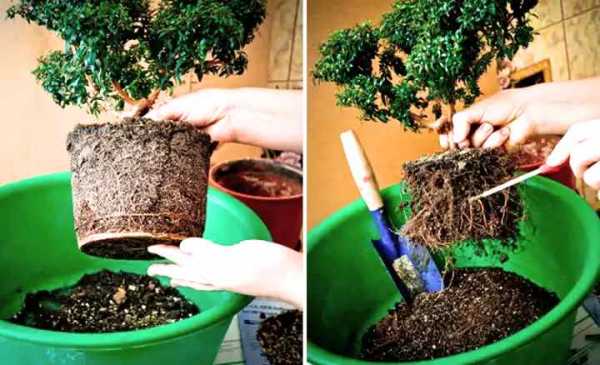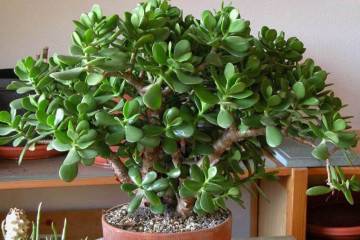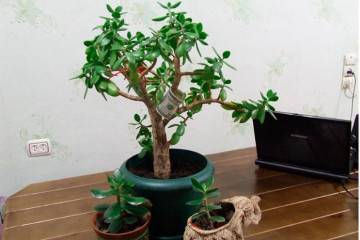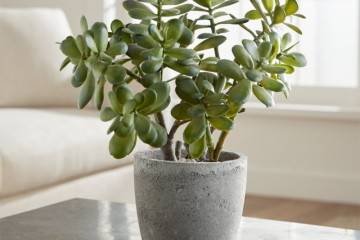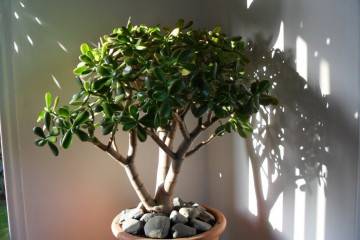Myrtle tree - home care
Content:
- Botanical description of myrtle
- How to care for a myrtle tree
- Features of caring for the myrtle tree during the rest period
- Changes in potted myrtle care during flowering
- Pruning myrtle: how to properly shape the crown
- How to transplant myrtle at home
- Myrtle tree propagation methods
- Typical plant diseases and pests
Myrtle is a useful home decoration. The plant can be shaped to any shape, making beautiful bonsai. It is easy and simple to get along with him, it is enough to know a few secrets in his care.
Botanical description of myrtle
This is a representative of the Myrtle family, which has up to 40 plant species. It looks like a low evergreen tree or shrub. The leaf plates are small, oval, leathery. The color of the greenery is dark, the surface of the leaf is shiny. Small flowers grow from the axils of the leaves, they can grow in bunches or singly. Small flowers adorn a dense bunch of stamens and have a pleasant aroma.
Common species and varieties
A variety of varieties allows you to choose the most unusual and expressive trees in shape and color:
- Bacchusia. The variety is interesting for its bright citrus aroma. Flowers on a cream-colored tree with long stamens;
- Tarentine. Dwarf myrtle with abundant snow-white blooms;
- Apiculata. Lush myrtle is distinguished by densely dotted elliptical leaves on the branches. After the white single flowers have bloomed, black and red edible fruits are formed.
How to care for a myrtle tree
Caring for myrtle is not too difficult, it is based on watering and a lot of light.
Where to place the plant
A lot of light is the main principle for the healthy growth of myrtle. Lighting should be from all sides, then the crown will be formed evenly. The south window is the optimal side for the pot. During the adaptation period, you need to accustom to light first on the south-west or east window.
What to observe the temperature regime
The temperature regime from the moment of awakening should gradually rise to 20 ° C. In summer, myrtle blooms at a temperature of 25-27 ° C. The scorching rays of the sun can be harmful, you need to shade the tree at noon.
In winter, the temperature should not be higher than 10 ° C. Myrtle winters well at 5 ° C, but it will take longer to wake up after such a dream.
How and with what water to water
Watering is a decisive aspect of the healthy growth of a myrtle tree after lighting. The plant needs abundant and frequent watering with quality water.
Basic rules for watering:
- between waterings, only the upper 2-3 cm of the soil should be dry;
- stagnation of water is unacceptable for the root system; excess water from the sump should be removed immediately;
- drying out of an earthen coma in a pot can lead to the death of the plant;
- water for irrigation should be soft and settled.
During the dormant period, the frequency of watering is reduced.
How to spray
An exotic indoor flower loves moisture both inside the pot and on the crown.Frequent spraying will support not only the decorative effect of the tree, but also its healthy growth.
What to feed
Myrtle needs regular feeding during the period of active growth. The usual universal composition is suitable, which is applied once a week.
Features of caring for the myrtle tree during the rest period
The length of the rest period depends on the placement of the pot. The farther south it is, the shorter the sleep period will last. When placed on the north window, sleep lasts 3 months, on the south window - 1.5-2 months.
Dormant conditions for the myrtle tree:
- temperature 5-10 ° C;
- good lighting;
- watering period as needed;
- exclusion of fertilizing and spraying.
Changes in potted myrtle care during flowering
When the myrtle tree blooms, home care is aimed at regular feeding, adherence to the watering regime and sufficient lighting.
Pruning myrtle: how to properly shape the crown
Pruning does not hurt myrtle. Thanks to her, the tree can be given any shape. After pruning, the branches can not be processed, just let them dry.
Sanitary pruning is often performed during transplantation. It is important to choose exactly dry branches, and not those on which the leaves have simply fallen off. There is a chance that buds and greens will appear on such branches.
How to transplant myrtle at home
A young flower needs an annual soil change. An adult plant should be replanted every 2-3 years, but the topsoil should be renewed every year.
Land for myrtle: what is needed
The substrate in which the myrtle grows should be light and moisture-retaining. In ordinary greenhouse soil, it is enough to add perlite and make good drainage. You can also make a soil by mixing in equal parts:
- humus;
- clay soil;
- sod soil;
- sand.
How to choose a pot
The tree grows actively and in the first year it can grow more than a meter in height. Accordingly, the root system is also actively developing and growing. It is necessary to take a roomy pot, otherwise the roots will begin to look out through the drainage after a couple of months. But too large a pot will be an incentive to grow root mass, instead of green.
The main thing in a myrtle pot is drainage - holes that will remove excess liquid from the soil.
Step-by-step transplant process
The next myrtle transplant is a transshipment with a preventive inspection of the plant. Step by step, this process will look like this:
- Visual inspection for dry, damaged, diseased twigs.
- Sanitary pruning and crown shaping.
- The choice of a pot is slightly larger than the previous one by 2-3 cm in diameter and height.
- Inspection of the roots after removing the earthen clod from the pot. All dry, too long or thin roots are cut off. The cut sites are treated with a root growth stimulant. It is not necessary to strongly remove the old earthen lump.
- Filling the bottom of the pot with expanded clay, clay shards. Next, there should be a layer of earth.
- Setting the plant in a new pot at the same level without covering the growing point with soil. This can cause rotting of its base.
- Watering the myrtle, after which the pot must be put in the shade for several days.
Myrtle tree propagation methods
Potted myrtle can be propagated by seed or cuttings. If you collect seeds at home, this does not guarantee the transfer of all varietal traits to a new plant.
Seeds
Seeds are sown in one container with a mixture of peat and sand.Cover with glass or film on top. Conditions for germinating myrtle seeds:
- temperature 21 ° C;
- diffused light for at least 12 hours;
- daily airing;
- humidification from a spray bottle as needed.
Cuttings
Cuttings need to be cut by 9-10 cm. They can be planted directly into the soil (sand + peat). In a greenhouse, rooting will be faster and more successful. After 2-3 weeks, new roots appear, and the stalk grows.
Typical plant diseases and pests
The main diseases of myrtle are putrefactive processes of the root system or crown. They are associated with an incorrect watering regime and a poor drainage device in the pot.
Pests living on myrtle include:
- spider mite;
- aphid;
- whitefly;
- shield;
- thrips.
Regular inspection and preventive treatment - protecting the plant from pests and diseases.
An incredibly beautiful myrtle tree is a fragrant benefit and a worthy phyto-friend for a florist. Dark glossy greens blend in with any room. And for love and care, the myrtle will thank you with flowering.
